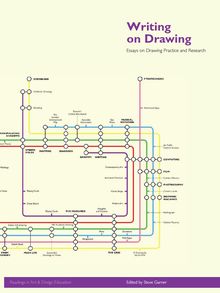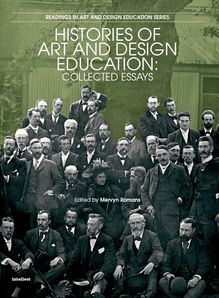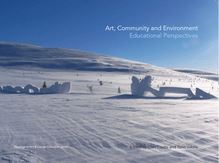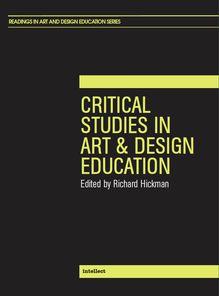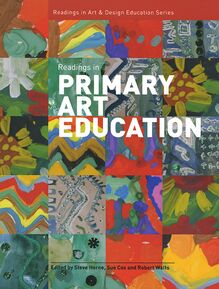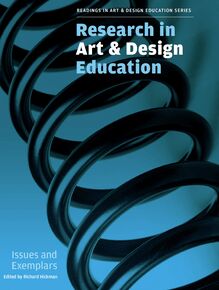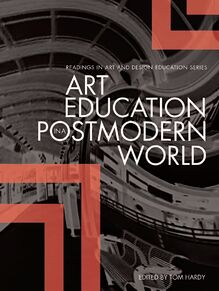-
 Univers
Univers
-
 Ebooks
Ebooks
-
 Livres audio
Livres audio
-
 Presse
Presse
-
 Podcasts
Podcasts
-
 BD
BD
-
 Documents
Documents
-
- Cours
- Révisions
- Ressources pédagogiques
- Sciences de l’éducation
- Manuels scolaires
- Langues
- Travaux de classe
- Annales de BEP
- Etudes supérieures
- Maternelle et primaire
- Fiches de lecture
- Orientation scolaire
- Méthodologie
- Corrigés de devoir
- Annales d’examens et concours
- Annales du bac
- Annales du brevet
- Rapports de stage
La lecture à portée de main
Vous pourrez modifier la taille du texte de cet ouvrage
Découvre YouScribe en t'inscrivant gratuitement
Je m'inscrisDécouvre YouScribe en t'inscrivant gratuitement
Je m'inscrisEn savoir plus
Vous pourrez modifier la taille du texte de cet ouvrage
En savoir plus

Description
Many of the essays pinpoint the stagnancy of teaching methods today and discuss the reductive parameters enforced by the current curriculum. The radical tone that echoes through the entire series of papers is unmistakable. Throughout the book, postmodern theory informs the polemical debate concerning new directions in educative practice. Contributors shed new light on a postmodern view of art in education with emphasis upon difference, plurality and independence of mind. Ultimately, the paper provides a detailed insight into the various concepts that shape and drive the contemporary art world and expands the debate regarding the impression of postmodern thinking in art education.
Sujets
Informations
| Publié par | Intellect Books |
| Date de parution | 01 juillet 2006 |
| Nombre de lectures | 0 |
| EAN13 | 9781841509587 |
| Langue | English |
Informations légales : prix de location à la page 0,1600€. Cette information est donnée uniquement à titre indicatif conformément à la législation en vigueur.
Extrait
Art Education in a Postmodern World: Collected Essays
Edited by Tom Hardy
Series editor: John Steers
First Published in the UK in 2006 by Intellect Books, PO Box 862, Bristol BS99 1DE, UK First Published in the USA in 2006 by Intellect Books, ISBS, 920 NE 58th Ave. Suite 300, Portland, Oregon 972133786, USA Copyright 2006 NSEAD All rights reserved. No part of this publication may be reproduced, stored in a retrieval system, or transmitted, in any form or by any means, electronic, mechanical, photocopying, recording, or otherwise, without written permission.
A catalogue record for this book is available from the British Library
Electronic ISBN 1-84150-958-2 / ISBN 1841501468 ISSN 17476208 Cover Design: Gabriel Solomons Copy Editor: Holly Spradling
Printed and bound by The Cromwell Press, Trowbridge, Wiltshire
Contents
Acknowledgements
Preface John Steers
Introduction: Nailing Jelly: Art Education in a Postmodern World Tom Hardy
Chapter 1: A Manifesto for Art in Schools John Swift and John Steers
Chapter 2: Nick Stanley and Sarat Maharaj: A Discussion Sarat Maharaj
Chapter 3: Censorship in Contemporary Art Education Lee Emery
Chapter 4: Post-it Culture: Postmodernism and Art and Design Education Stuart W MacDonald
Chapter 5: The Trouble with Postmodernism Stuart W MacDonald
Chapter 6: Postmodern Feminisms: Problematic Paradigms Lesley Burgess and Diane Reay
Chapter 7: The Knowing Body: Art as an Integrative System of Knowledge John Danvers
Chapter 8: Postmodernism and the Art Curriculum: A New Subjectivity Malcolm Miles
Chapter 9: Challenges to Art Education from Visual Culture Studies Paul Duncum
Chapter 10: Who s Afraid of Signs and Significations? Defending Semiotics in the Secondary Art and Design Curriculum Nicholas Addison
Chapter 11: On Sampling the Pleasures of Visual Culture: Postmodernism and Art Education Robin Marriner
Chapter 12: A Critical Reading of the National Curriculum for Art in the Light of Contemporary Theories of Subjectivity Dennis Atkinson
Chapter 13: Assessment in Educational Practice: Forming Pedagogised Identities in the Art Curriculum Dennis Atkinson
Notes on contributors
Index
Acknowledgements
I am indebted to the contributors for their time and patience, revising and updating texts. I would particularly like to thank John Steers and Nick Stanley for their astute proof-reading and invaluable advice on the format of this collection. This book is dedicated to Rose, Olivia, Harriet and Beatrice; and to my students, past and present, whose work has been the proof of the pudding
Tom Hardy
Preface
This book is the third in a planned series of anthologies dealing with a range of issues in art and design education. Titles published to date are Critical Studies in Art Design Education and Histories of Art and Design Education. The primary - but not exclusive - source of chapters are papers previously published in the [International] Journal of Art Design Education and where appropriate these have been updated. It should be noted that any references to the English National Curriculum statutory Orders, etc., are to that version of the curriculum current at the time of the original publication.
The National Society for Education in Art and Design is the leading national authority in the United Kingdom, combining professional association and trade union functions, which represents every facet of art, craft and design in education. Its authority is partly based upon a century-long concern for the subject, established contacts within government and local authority departments, and a breadth of membership drawn from every sector of education from the primary school to universities. More information is available at www.nsead.org or from NSEAD, The Gatehouse, Corsham Court, Corsham, Wiltshire SN13 0BZ (Tel: 01249 714825).
John Steers Series editor
Introduction: Nailing Jelly: Art Education in a Postmodern world
Tom Hardy
We live in a postmodern age. The artistic and philosophical zeitgeist is one of a deconstructive challenge of absolutes, an abrogation of the tired conventions of modernism, a resistance to the exclusivity implied by long-held aesthetic principles, deliberate ambiguity and a mistrust of language. Thus, fuelled by dissenting views and contradictory by nature, definition of this condition would seem to be a tall order: akin to nailing jelly to the ceiling. Even so, it is a paradigm which has changed art and design, architecture, music and the theatre beyond recognition in the last two decades of the twentieth century.
It has given us the MI5 building at Vauxhall, sampling and rap in music, Jerry Springer: the Opera, Galliano and Brit art. It is strange, therefore, that so little has been written to try and corral the paradoxical concepts which shape and drive the contemporary art world for the consumption of teachers, trainee teachers and students in secondary and further education. I hope that, despite what Stuart MacDonald calls the promiscuity of the subject, this collection will provide the uninitiated with a toehold.
What is postmodern art?
Ce i n est pas une pipe.
Ren Magritte s play with meaning (i.e. this is not a pipe, it is a painting) heralded the post-structural wrestle with linguistic reliability and, in turn, the postmodern quest by visual artists for interactive dialogue and playful ambiguity.
The term postmodernism first appeared in print in Joseph Hudnot s Architecture and the Spirit of Man (1949). It was originally used to mean simply after modernism but, with the Hegelian inevitability that antithesis follows thesis, it has more recently come to mean against modernism . However, adopting a constructive postmodern approach does not necessarily mean a rejection of all that the twentieth century had to offer, but an overlaying of a critical eye and language which challenges the conventions of modernism, while picking over its tastier morsels and revisiting all that modernism rejected. Charles Jencks, for one, viewed the postmodern as the preservation as well as the transformation of modernism. 1
It is true that, in some fields, a narrow reading has led to simplistic outcomes. In the field of contemporary pop music it seems merely to have led to the dead end of appropriation (sampling) without much in the way of innovation. However, in the visual arts, the tendency has not been to strip down but to add the dimensions of interaction and discourse. One has only to see the revival of naturalistic painting to know that traditional skills are not necessarily eschewed but given extra breadth and social relevance. If this were to be demonstrated with a Venn diagram, modernism might be seen to be the yolk in a postmodern fried egg.
Unlike the linear approach of modernism, the approach of postmodernism is multifaceted, and hence makes room for modernism. 2
In a nutshell the principles, which have converged to underpin the movement, are as follows:
1. The Little Narrative. Individual stories and symbols but within the context of a cultural melting pot.
in classes that are increasingly multicultural this means consideration of alternative points of view, with particular attention to minorities and gender issues. 3
This runs hand in hand with the push for citizenship in schools (and a more politicized youth in the wake of the anti-globalization movement and the war in Iraq), and in parallel with the massive recent expansion of personal web logs, home pages and all that the Internet has to offer in terms of interaction. The phrase interconnected differences 4 has found some currency in debate on the subject.
Here the trend of the artist as collaborator rather than solitary hero or romantic outsider becomes apparent as feminist or minority cultural narratives are explored. Indeed, this respect for the group over the individual might be seen as reaction to the There is no such thing as society pronouncements of the Thatcher era.
2. Iconoclasm. The value of artwork is explored and questioned and the accepted canon is balanced with a socio-political regard for the place of women and non-western practitioners in the history of art.
The role of black culture in this period of reconfiguration has been to divest art of its current despair and create in its place a new optimism, an alternative worldview, and an unparalleled critical stance. 5
There is, though, a danger of undermining such hard-won respect when the nascent orthodoxies of PM [ ] can only see the distinctive formal features of Black expressive culture in terms of pastiche, quotation, parody and paraphrase, 6 the main weapons in the postmodern armoury.
3. Dialogue and Text. The meaning of art is explored through deconstruction, discourse and the encouragement of multiple interpretations. Recently, Nicolas Serota, Director of the Tate Galleries, encapsulated the postmodern mindset when he remarked, There will not always be an answer to every question. Art obliges us to answer questions for ourselves. 7 Symbolism has always been part of the artist s tool kit; it was inevitable that semiotics would play a part in a new movement.
4. Eclecticism. The deliberate plucking of elements out of their original contexts and bringing them together to form new aesthetic relationships and tensions are common postmodern traits. Jencks refers to this as Double Coding. 8 Ambiguities and surprises, often with humour, are trademarks of pomo and such playfulness contrasts with the po-faced seriousness of the modernistas .
A few jokes would help to open up the absurdity of the way things are. 9
The thrust, therefore, of postmodernism is critique: an expos of the myth of originality and the bias of the accepted historical narrative. Pluralism and difference replace the linear concept of coherent schools or movements . Conclusions are unlikely: all is deemed work in progress.
The debate
Critics have expressed concern that postmodernism rejects qualitative judgment and that we have
-
 Univers
Univers
-
 Ebooks
Ebooks
-
 Livres audio
Livres audio
-
 Presse
Presse
-
 Podcasts
Podcasts
-
 BD
BD
-
 Documents
Documents
-
Jeunesse
-
Littérature
-
Ressources professionnelles
-
Santé et bien-être
-
Savoirs
-
Education
-
Loisirs et hobbies
-
Art, musique et cinéma
-
Actualité et débat de société
-
Jeunesse
-
Littérature
-
Ressources professionnelles
-
Santé et bien-être
-
Savoirs
-
Education
-
Loisirs et hobbies
-
Art, musique et cinéma
-
Actualité et débat de société
-
Actualités
-
Lifestyle
-
Presse jeunesse
-
Presse professionnelle
-
Pratique
-
Presse sportive
-
Presse internationale
-
Culture & Médias
-
Action et Aventures
-
Science-fiction et Fantasy
-
Société
-
Jeunesse
-
Littérature
-
Ressources professionnelles
-
Santé et bien-être
-
Savoirs
-
Education
-
Loisirs et hobbies
-
Art, musique et cinéma
-
Actualité et débat de société
- Cours
- Révisions
- Ressources pédagogiques
- Sciences de l’éducation
- Manuels scolaires
- Langues
- Travaux de classe
- Annales de BEP
- Etudes supérieures
- Maternelle et primaire
- Fiches de lecture
- Orientation scolaire
- Méthodologie
- Corrigés de devoir
- Annales d’examens et concours
- Annales du bac
- Annales du brevet
- Rapports de stage

